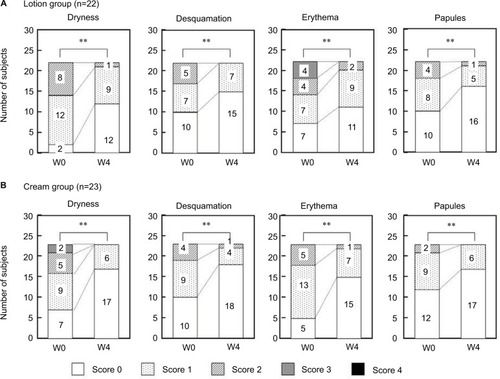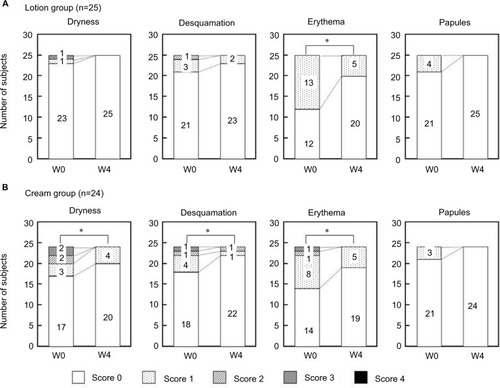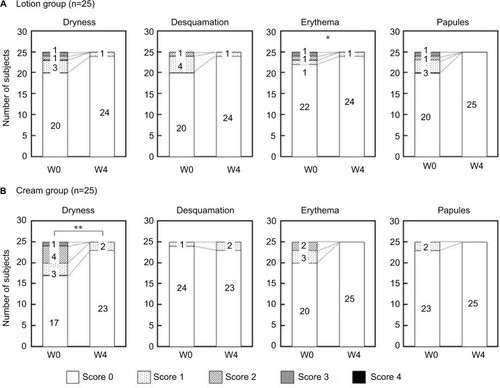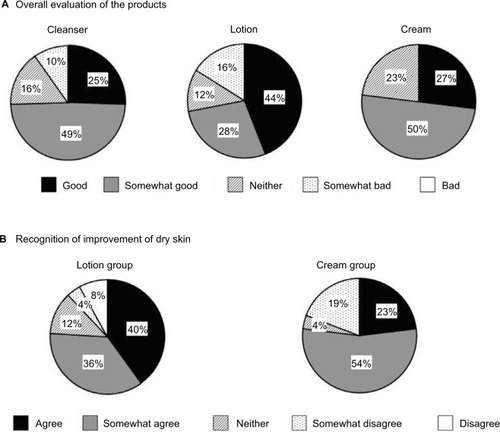Figures & data
Table 1 Full ingredient list of the test materials
Table 2 Prevalence of each skin symptom at week 0 based on visual skin assessment by dermatologist (number of infants)
Figure 1 Evaluation of dryness, desquamation, erythema, and papules following the usage of the cleanser and moisturizer on the face.

Figure 2 Typical clinical features of facial skin in an 8-month-old female infant.

Figure 3 Evaluation of dryness, desquamation, erythema, and papules following the usage of the cleanser and moisturizer on the buttocks.

Figure 4 Evaluation of dryness, desquamation, erythema, and papules following the usage of the cleanser and moisturizer on the flexor of the arms.

Figure 5 TEWL, pH and capacitance of the face, flexor of the arm, and buttock following the usage of the cleanser and moisturizer.
Abbreviation: TEWL, transepidermal water loss.

Table 3 Overall improvement rate and usefulness judged by dermatologist (number of infants)

